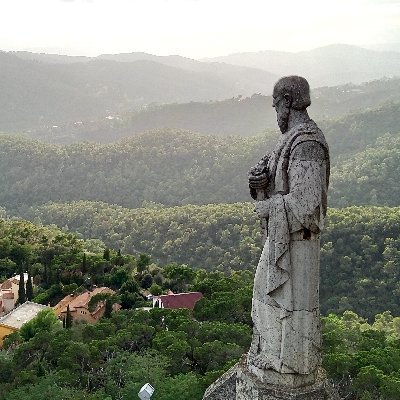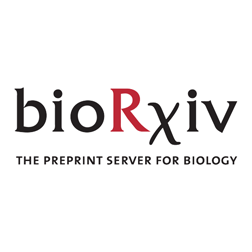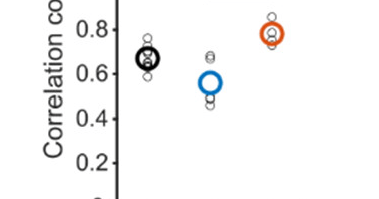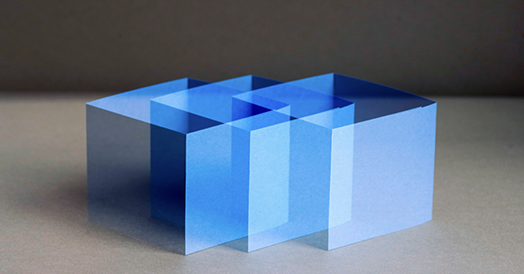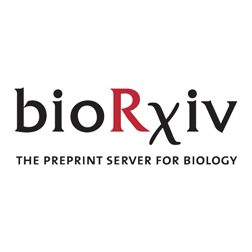
Peter Rupprecht
@ptrrupprecht
Followers
1K
Following
1K
Media
41
Statuses
1K
Junior group leader in neuroscience - calcium imaging, ephys, plasticity, microscopy, data analysis. PhD with @RainerFriedri12, postdoc with @FritjofHelmchen.
Zürich, Switzerland
Joined October 2017
Are you using GCaMP8 or planning to switch from GCaMP6? Then check out this new preprint from our lab! https://t.co/TZcjFdeYG4 - Calcium imaging - GCaMP8 vs. GCaMP6 - Spike inference - Imaging + ephys ground truth With F. Helmchen, K. Svoboda @svoboda314, M. Rozsa & X. Fang.
1
26
97
Happy to share the first paper from my journey at @psich towards X-ray connectomics, now out in @naturemethods: https://t.co/O7ZnREflNw
1
4
9
I am super happy to share that our project on training biophysical models with Jaxley is now published in Nature Methods: https://t.co/ZspqkCuktn
nature.com
Nature Methods - Jaxley is a versatile platform for biophysical modeling in neuroscience. It allows efficiently simulating large-scale biophysical models on CPUs, GPUs and TPUs. Model parameters...
3
33
126
New blog post, where I highlight a few interesting papers on astrocyte ultrastructure and function, with papers from the labs of Moritz Helmstädter @mh_lab, Kristen Harris, Andrea Volterra, Karin Pernet-Gallay, and Hailan Hu:
gcamp6f.com
Astrocytes are brain cells that are often completely overlooked and dismissed or, in the opposite extreme, presented as mysterious devices that somehow solve all problems of computational neuroscie…
0
1
8
This is at once true and useful, and also what is wrong with science in the 21st century. Being a good scientist is about understanding a field well, thinking of unique hypothesis, and performing experiments carefully to address them. Being a *successful* scientist OTOH ...
I am often asked what the one skill is that young scientists should work on the most. My answer: your storytelling via presentations. The better you present, the more your ideas travel, the more doors open, and the more people want to work with you. A few tips: Have one clear
5
27
231
@EMBLHeidelberg is looking for a new Head of Scientific Instrumentation! This is an exciting opportunity at the interface between scientific research and technology development, overseeing our mechanical and electronic workshops! https://t.co/dJ3Qze6d71
1
4
6
Resolving synaptic events using subsynaptically targeted GCaMP8 variants "a ratiometric presynaptic GCaMP8m sensor accurately captures (...) presynaptic Ca2+ changes with superior sensitivity and similar kinetics compared to chemical dyes" https://t.co/RrMoseRhfq
0
7
35
Our paper on the development of a two-photon microscope has been released on bioRxiv.
biorxiv.org
Large field-of-view (FOV) two-photon microscopy makes it possible to record a large number of neural activities from multiple brain regions simultaneously. However, the larger the field of view, the...
1
11
24
⏳ Extra time unlocked! The #AI4Life challenges deadline is now August 31 — more time to train, tweak, and triumph with your best AI models for bioimage analysis! 🚀 Take on the challenge: 1️⃣ Denoising: https://t.co/BpymtSj6Wu 2️⃣ Calcium Imaging: https://t.co/g3G1oTGLvt
0
8
15
New blog post about a fun project: I decorated my office by putting a poster of an EM picture of the hippocampal coronal column onto my walls: https://t.co/gFZDrCLu8n EM picture credit: https://t.co/fQdHyakAqt from the lab of @helenelab2020
biorxiv.org
The hippocampal formation is thought to be crucial for memory and learning, with subarea cornu ammonis 1 (CA1) considered to play a major role in spatial and episodic memory formation, and for...
0
2
12
Our new paper is published in Current Biology! In this project, we developed a model showing how social and depth information are integrated to drive affiliative behavior in zebrafish. See: https://t.co/zhAZYFzvVy
4
11
20
New blog post with a review of interesting papers on VIP interneurons in cortex and hippocampus: https://t.co/1TXrxl98Hx Covering some fascinating work from the labs of @koen_vervaeke, @YoavAdam and @RudyNeuroLab.
gcamp6f.com
Interneurons are inhibitory neurons in the brain that are thought to shape the computations performed by principal cells. The effects of inhibition can be rather diverse, depending on which neurons…
0
1
9
Excited to share our latest Review on three-photon microscopy in the neurosciences - out today in @NatRevNeurosci ! Hopefully this will help spread this powerful deep-imaging technique even further. Access here: https://t.co/bE506bZQKo Thanks to all co-authors!
1
9
42
Fantastic work (as always) from Che-Hang Yu and colleagues in Spencer Smith's lab @Labrigger. Neat method to increase scan speed and/or FOV in 2p microscopy. Commercially available from @pacificoptica . I'd love to build this for a client at some point! https://t.co/caj5Pv3ZIA
2
6
24
#JNeurosci: Results @ptrrupprecht et al. demonstrate how calcium imaging generalizes across CNS regions and enables the more accurate interpretation of calcium signals from the spinal cord dorsal horn of mice. https://t.co/NPmpDDVjyy
1
8
30
A statistical error known as pseudoreplication appears in more than half of recent mouse studies on neurological disorders, according to a new study. Peter Kind and Constantino Elfetheriou tell Lauren Schenkman why researchers should pay attention. https://t.co/dQFgf7Ratl
thetransmitter.org
Most studies of neurological disorders in mice erroneously treat multiple samples from a single animal as independent replicates, according to a new analysis. But scientists and journals can take…
3
6
11
In vivo deep-brain microscopy at submicrometer resolution with refractive index-matched prism interfaces https://t.co/EbzXkOqkgA
#biorxiv_neursci
biorxiv.org
The mammalian brain is a thick and densely layered structure comprising a huge number of neurons that work together to process information and regulate brain functions. Although various optical...
2
10
21
https://t.co/hO5OzzVf32 Amazing work by Anna Maria Reuss from @UZH_ch! Clearing and staining of large archival FFPE human tissue blocks from various organs. This method now enables comprehensive 3D studies from FFPE tissue biobanks.
biorxiv.org
During human surgeries and autopsies, specimens are regularly sampled and stored as formalin-fixed paraffin-embedded (FFPE) tissue blocks. Diagnoses are rendered by microscopical examination of...
0
2
2
Now published in Journal of Neuroscience!🥳 @SfNJournals with public reviews and open datasets:
jneurosci.org
Calcium imaging is a key method to record the spiking activity of identified and genetically targeted neurons. However, the observed calcium signals are only an indirect readout of the underlying...
New preprint on spike inference! How do models for spike inference trained on cortex generalize to very dissimilar datasets? To address this question, we performed analyses and experiments on excitatory and inhibitory neurons in the spinal cord: https://t.co/CqWOVBhWXI 1/5
0
4
20
Our work on aberration-corrected endoscopes is out on @eLife as a Version of Record! Thanks to the reviewers for the constructive feedbacks. Link -> https://t.co/PCyBdAEM0J
2
13
55





